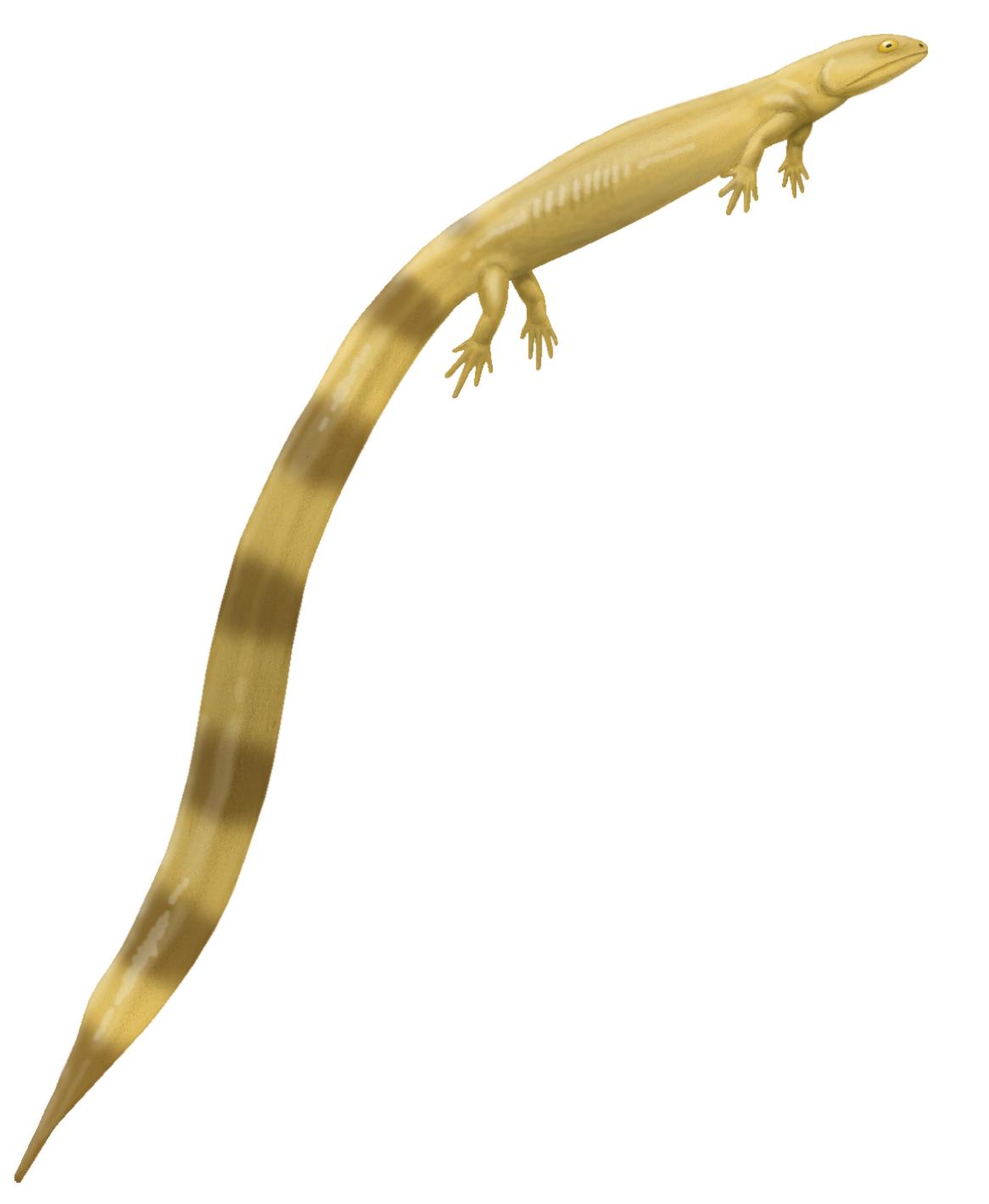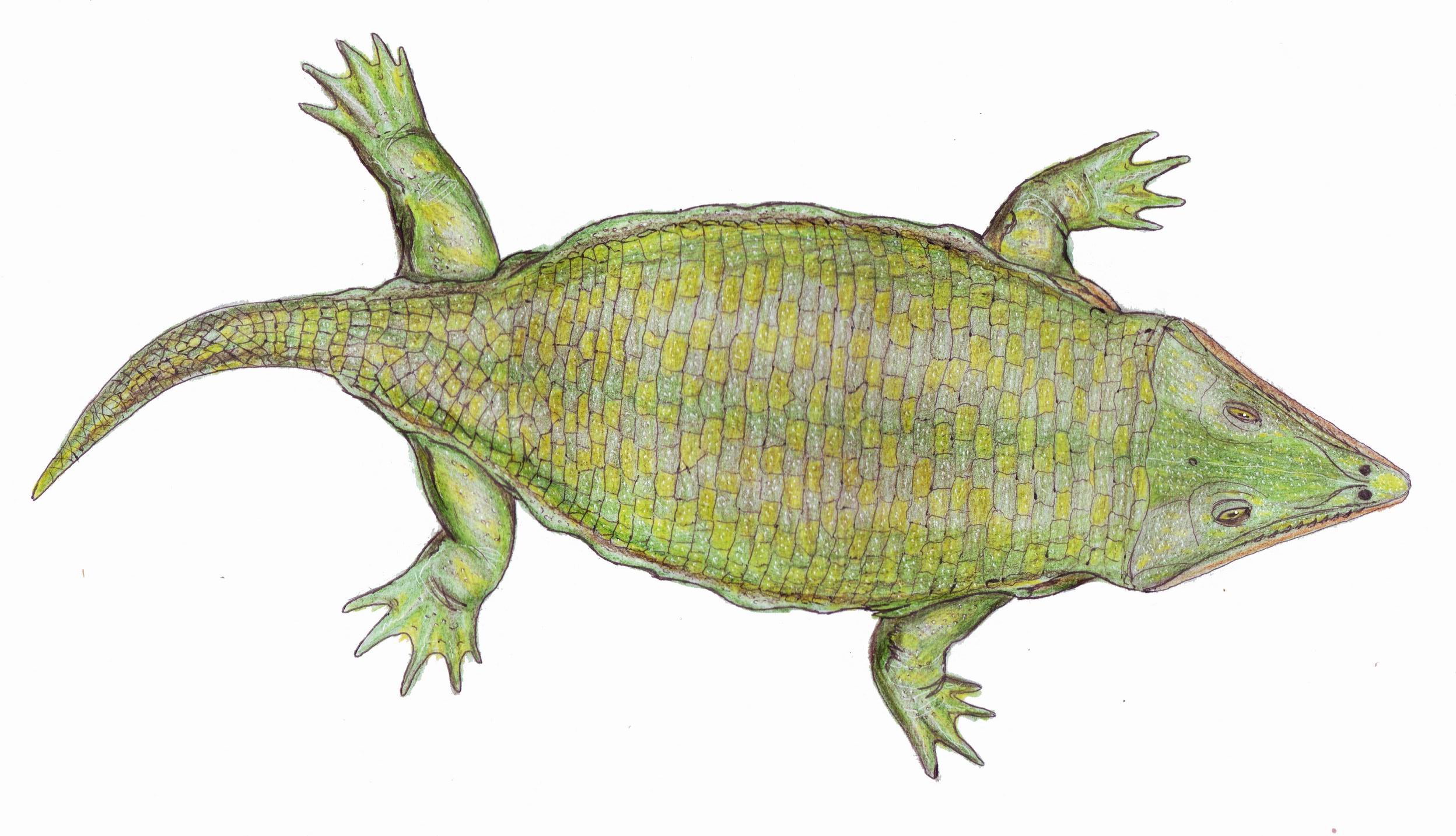|
Crossotelos Annulatus
''Crossotelos'' is an extinct genus of nectridean lepospondyl within the family Urocordylidae. It contains a single species, '' Crossotelos annulatus''. ''Crossotelos'' lived in modern-day Oklahoma and Texas, United States during the Early to Lower Permian. See also * Prehistoric amphibian * List of prehistoric amphibians This list of prehistoric amphibians is an attempt to create a comprehensive listing of all genera from the fossil record that have ever been considered to be amphibians, excluding purely vernacular terms. The list includes all commonly accepted g ... References Holospondyls {{Lepospondyli-stub ... [...More Info...] [...Related Items...] OR: [Wikipedia] [Google] [Baidu] |
Genus
Genus ( plural genera ) is a taxonomic rank used in the biological classification of extant taxon, living and fossil organisms as well as Virus classification#ICTV classification, viruses. In the hierarchy of biological classification, genus comes above species and below family (taxonomy), family. In binomial nomenclature, the genus name forms the first part of the binomial species name for each species within the genus. :E.g. ''Panthera leo'' (lion) and ''Panthera onca'' (jaguar) are two species within the genus ''Panthera''. ''Panthera'' is a genus within the family Felidae. The composition of a genus is determined by taxonomy (biology), taxonomists. The standards for genus classification are not strictly codified, so different authorities often produce different classifications for genera. There are some general practices used, however, including the idea that a newly defined genus should fulfill these three criteria to be descriptively useful: # monophyly – all descendants ... [...More Info...] [...Related Items...] OR: [Wikipedia] [Google] [Baidu] |
Nectridea
Nectridea is the name of an extinct order of lepospondyl tetrapods from the Carboniferous and Permian periods, including animals such as ''Diplocaulus''. In appearance, they would have resembled modern newts or aquatic salamanders, although they are not close relatives of modern amphibians. They were characterized by long, flattened tails to aid in swimming, as well as numerous features of the vertebrae. Description Nectrideans are a diverse group of tetrapods, including the aquatic Urocordylidae, the presumably terrestrial Scincosauridae, and the bizarre horned members of Diplocaulidae (also known as Keraterpetonidae), which includes the "boomerang-headed" ''Diplocaulus'', one of the most famous genera of prehistoric amphibians (in the traditional sense of the word). By the time the earliest known nectrideans appeared in the Late Carboniferous fossil record, they had already diversified into these families, indicating that basal nectrideans are unknown. These different famili ... [...More Info...] [...Related Items...] OR: [Wikipedia] [Google] [Baidu] |
Lepospondyl
Lepospondyli is a diverse taxon of early tetrapods. With the exception of one late-surviving lepospondyl from the Late Permian of Morocco (''Diplocaulus minumus''), lepospondyls lived from the Early Carboniferous ( Mississippian) to the Early Permian and were geographically restricted to what is now Europe and North America. Five major groups of lepospondyls are known: Adelospondyli; Aïstopoda; Lysorophia; Microsauria; and Nectridea. Lepospondyls have a diverse range of body forms and include species with newt-like, eel- or snake-like, and lizard-like forms. Various species were aquatic, semiaquatic, or terrestrial. None were large (the biggest genus, the diplocaulid ''Diplocaulus'', reached a meter in length, but most were much smaller), and they are assumed to have lived in specialized ecological niches not taken by the more numerous temnospondyl amphibians that coexisted with them in the Paleozoic. Lepospondyli was named in 1888 by Karl Alfred von Zittel, who coined the name t ... [...More Info...] [...Related Items...] OR: [Wikipedia] [Google] [Baidu] |
Family (biology)
Family ( la, familia, plural ') is one of the eight major hierarchical taxonomic ranks in Linnaean taxonomy. It is classified between order and genus. A family may be divided into subfamilies, which are intermediate ranks between the ranks of family and genus. The official family names are Latin in origin; however, popular names are often used: for example, walnut trees and hickory trees belong to the family Juglandaceae, but that family is commonly referred to as the "walnut family". What belongs to a family—or if a described family should be recognized at all—are proposed and determined by practicing taxonomists. There are no hard rules for describing or recognizing a family, but in plants, they can be characterized on the basis of both vegetative and reproductive features of plant species. Taxonomists often take different positions about descriptions, and there may be no broad consensus across the scientific community for some time. The publishing of new data and opini ... [...More Info...] [...Related Items...] OR: [Wikipedia] [Google] [Baidu] |
Urocordylidae
The Urocordylidae are an extinct family (biology), family of nectridean lepospondyl amphibians. Urocordylids lived during the Late Carboniferous and Early Permian in what is now Europe and North America and are characterized by their very long, paddle-like tails. In life, they were probably newt-like and aquatic. Fossils have been found from Ireland, France, and the eastern United States. The family was named by English naturalist Richard Lydekker in 1889 and includes the well-known genera ''Urocordylus'' and ''Sauropleura'', as well as several others based on less-complete material. The family Urocordylidae is divided into two subfamilies, the Urocordylinae and the Sauropleurinae. The two groups are distinguished by the shapes of their skulls; urocordylines have short, blunt skulls, and sauropleurines have longer, pointed skulls. Description Urocordylids are distinguished by their elongated tails. Each tail vertebra has an upper crest of bone called a neural arch and a lower cr ... [...More Info...] [...Related Items...] OR: [Wikipedia] [Google] [Baidu] |
Crossotelos Annulatus
''Crossotelos'' is an extinct genus of nectridean lepospondyl within the family Urocordylidae. It contains a single species, '' Crossotelos annulatus''. ''Crossotelos'' lived in modern-day Oklahoma and Texas, United States during the Early to Lower Permian. See also * Prehistoric amphibian * List of prehistoric amphibians This list of prehistoric amphibians is an attempt to create a comprehensive listing of all genera from the fossil record that have ever been considered to be amphibians, excluding purely vernacular terms. The list includes all commonly accepted g ... References Holospondyls {{Lepospondyli-stub ... [...More Info...] [...Related Items...] OR: [Wikipedia] [Google] [Baidu] |
Oklahoma
Oklahoma (; Choctaw language, Choctaw: ; chr, ᎣᎧᎳᎰᎹ, ''Okalahoma'' ) is a U.S. state, state in the South Central United States, South Central region of the United States, bordered by Texas on the south and west, Kansas on the north, Missouri on the northeast, Arkansas on the east, New Mexico on the west, and Colorado on the northwest. Partially in the western extreme of the Upland South, it is the List of U.S. states and territories by area, 20th-most extensive and the List of U.S. states and territories by population, 28th-most populous of the 50 United States. Its residents are known as Oklahomans and its capital and largest city is Oklahoma City. The state's name is derived from the Choctaw language, Choctaw words , 'people' and , which translates as 'red'. Oklahoma is also known informally by its List of U.S. state and territory nicknames, nickname, "Sooners, The Sooner State", in reference to the settlers who staked their claims on land before the official op ... [...More Info...] [...Related Items...] OR: [Wikipedia] [Google] [Baidu] |
Texas
Texas (, ; Spanish language, Spanish: ''Texas'', ''Tejas'') is a state in the South Central United States, South Central region of the United States. At 268,596 square miles (695,662 km2), and with more than 29.1 million residents in 2020, it is the second-largest U.S. state by both List of U.S. states and territories by area, area (after Alaska) and List of U.S. states and territories by population, population (after California). Texas shares borders with the states of Louisiana to the east, Arkansas to the northeast, Oklahoma to the north, New Mexico to the west, and the Mexico, Mexican States of Mexico, states of Chihuahua (state), Chihuahua, Coahuila, Nuevo León, and Tamaulipas to the south and southwest; and has a coastline with the Gulf of Mexico to the southeast. Houston is the List of cities in Texas by population, most populous city in Texas and the List of United States cities by population, fourth-largest in the U.S., while San Antonio is the second most pop ... [...More Info...] [...Related Items...] OR: [Wikipedia] [Google] [Baidu] |
Permian
The Permian ( ) is a geologic period and stratigraphic system which spans 47 million years from the end of the Carboniferous Period million years ago (Mya), to the beginning of the Triassic Period 251.9 Mya. It is the last period of the Paleozoic Era; the following Triassic Period belongs to the Mesozoic Era. The concept of the Permian was introduced in 1841 by geologist Sir Roderick Murchison, who named it after the region of Perm in Russia. The Permian witnessed the diversification of the two groups of amniotes, the synapsids and the sauropsids ( reptiles). The world at the time was dominated by the supercontinent Pangaea, which had formed due to the collision of Euramerica and Gondwana during the Carboniferous. Pangaea was surrounded by the superocean Panthalassa. The Carboniferous rainforest collapse left behind vast regions of desert within the continental interior. Amniotes, which could better cope with these drier conditions, rose to dominance in place of their am ... [...More Info...] [...Related Items...] OR: [Wikipedia] [Google] [Baidu] |
Prehistoric Amphibian
This list of prehistoric amphibians is an attempt to create a comprehensive listing of all Genus, genera from the fossil record that have ever been considered to be amphibians, excluding purely vernacular terms. The list includes all commonly accepted genera, but also genera that are now considered invalid, doubtful (''nomen dubium, nomina dubia''), or were not formally published (''nomen nudum, nomina nuda''), as well as synonym (zoology), junior synonyms of more established names, and genera that are no longer considered amphibians. Modern forms are excluded from this list. The list currently includes 454 names. Naming conventions and terminology Naming conventions and terminology follow the International Code of Zoological Nomenclature. Technical terms used include: * Synonym (zoology), Junior synonym: A name which describes the same taxon as a previously published name. If two or more genera are formally designated and the type (zoology), type specimens are later assigned to th ... [...More Info...] [...Related Items...] OR: [Wikipedia] [Google] [Baidu] |
List Of Prehistoric Amphibians
This list of prehistoric amphibians is an attempt to create a comprehensive listing of all genera from the fossil record that have ever been considered to be amphibians, excluding purely vernacular terms. The list includes all commonly accepted genera, but also genera that are now considered invalid, doubtful ('' nomina dubia''), or were not formally published (''nomina nuda''), as well as junior synonyms of more established names, and genera that are no longer considered amphibians. Modern forms are excluded from this list. The list currently includes 454 names. Naming conventions and terminology Naming conventions and terminology follow the International Code of Zoological Nomenclature. Technical terms used include: * Junior synonym: A name which describes the same taxon as a previously published name. If two or more genera are formally designated and the type specimens are later assigned to the same genus, the first to be published (in chronological order) is the senior synon ... [...More Info...] [...Related Items...] OR: [Wikipedia] [Google] [Baidu] |





